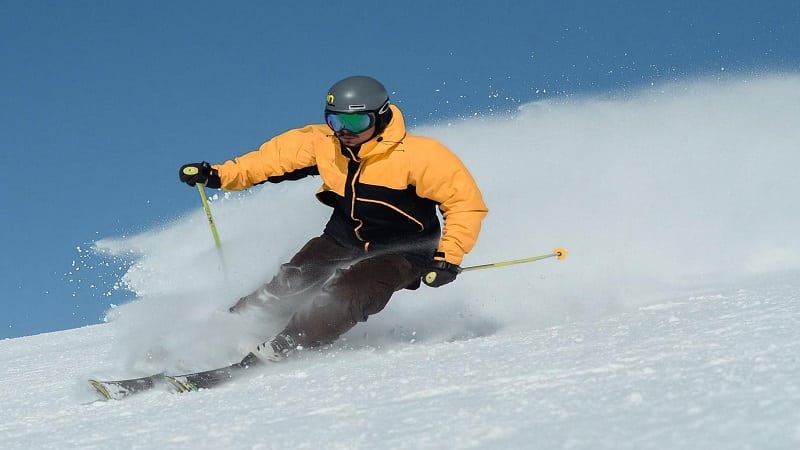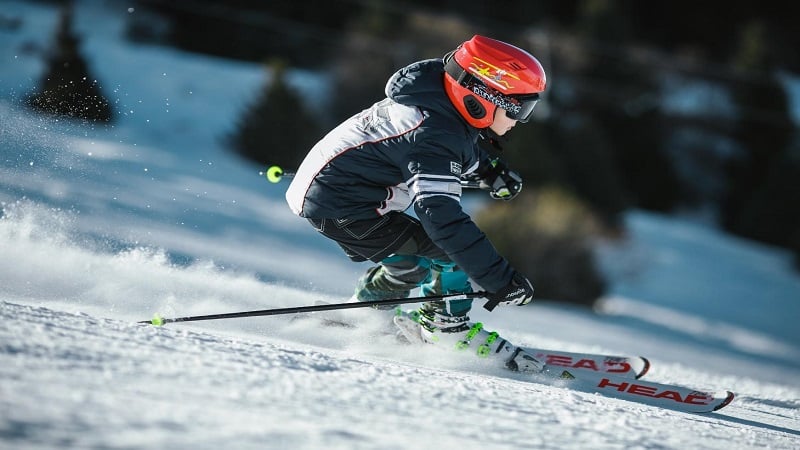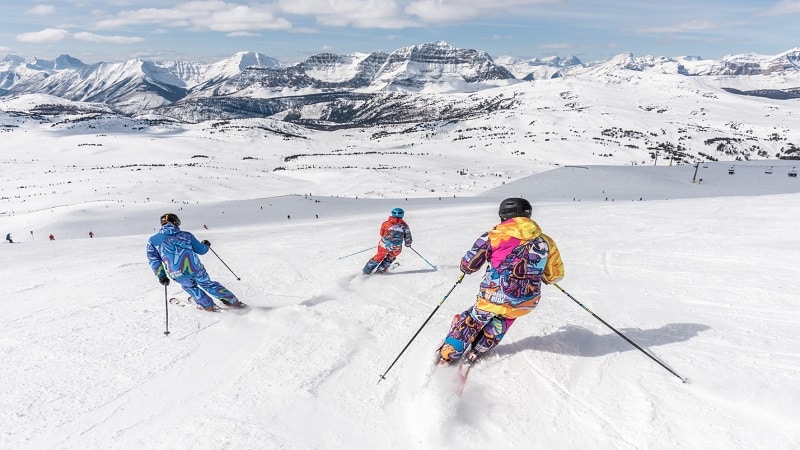Getting ready to hit the slopes means more than just strapping on your board. Warming up properly is key to staying injury-free and making the most of your day. The right gear can help you loosen up, stay comfortable, and get your muscles ready to carve through the snow.

Whether you’re a beginner or a seasoned rider you’ll want to have the best warm-up essentials on hand. From cozy layers to flexible accessories your warm-up routine will set you up for success. Let’s explore the gear that’ll keep you moving smoothly and feeling great before you take off down the mountain.
Importance of Proper Warm-Up for Snowboarding
Warming up before hitting the slopes prevents injuries by preparing your muscles and joints for the demands of snowboarding. Tight muscles reduce your flexibility and increase the risk of strains or sprains, especially in your knees, ankles, and lower back. A well-executed warm-up boosts blood flow, improving your reaction time and overall control during tricks and turns.
Improving performance becomes easier when you invest time in your warm-up routine. Dynamic stretches and light cardio activate your core and leg muscles, which are crucial for balance and stability. These movements increase your range of motion, so you’ll handle abrupt changes and rough terrain with more confidence.
Enhancing endurance also follows from proper warm-ups, as they gradually raise your heart rate without causing exhaustion. Avoid jumping straight into intense runs, or your energy could drain quickly, cutting your session short. Keep your joints lubricated and your muscles engaged with appropriate warm-up gear designed for moisture management and flexibility.
Reducing soreness after snowboarding happens when you prepare your body properly. Warm muscles flush out metabolic waste and bring in oxygen-rich blood. This recovery effect lessens the stiffness that often follows long hours on the mountain.
You protect your body, elevate your skills, and extend your time on the snow by prioritizing a good warm-up. Gear tailored to comfort and mobility plays a pivotal role, helping you stay limber and ready before you strap in.
Essential Snowboarding Warm-Up Gear
Choosing the right warm-up gear gets your body ready and keeps comfort high before hitting the slopes. This gear supports flexibility and heat retention to jump-start your snowboarding day.
Thermal Base Layers
Thermal base layers trap body heat while wicking sweat to keep you dry. Look for merino wool or synthetic blends, as these materials balance warmth and breathability. You want snug-fitting layers that won’t restrict movement but feel light against your skin during dynamic stretches.
Insulated Jackets and Pants
Insulated jackets and pants provide core warmth without bulk. Opt for waterproof, breathable fabrics like Gore-Tex or similar membranes to shield you from snow and wind during your warm-up. Stretch panels in key areas add flexibility for bending and twisting motions common in your pre-ride routine.
Gloves and Hand Warmers
Warm gloves protect your fingers from cold, stiffening that could limit grip and dexterity. Waterproof and insulated gloves with breathable liners work best. Hand warmers offer additional heat for cold days and can slip inside gloves to maintain finger flexibility while warming muscles.
Neck Gaiters and Balaclavas
Neck gaiters and balaclavas shield your neck, face, and ears from chilling winds that can quickly sap heat. Choose breathable, moisture-wicking fabrics that stay comfortable even when you sweat. These pieces also help prevent heat loss and keep your focus sharp during pre-ride movements.
Warm-Up Boots and Socks
Warm-up boots and socks keep your feet cozy and prepped. Wool or synthetic socks with cushioning support circulation and reduce friction inside boots. Lightweight, insulated warm-up boots let you move around comfortably off the board without sacrificing heat, helping your ankles and feet loosen before you strap in.
Choosing the Right Materials for Warm-Up Gear
Picking the right materials for your warm-up gear impacts comfort and performance on the slopes. Your gear needs to balance warmth, breathability, and moisture control to keep you ready for action without overheating or chilling.
Breathability and Moisture-Wicking
Breathability prevents sweat buildup that chills you during breaks. Look for fabrics like merino wool and advanced synthetic blends—they pull moisture away from your skin and let it evaporate quickly. You’ll stay dry and comfortable, even during intense warm-ups. Wool naturally resists odors, while synthetics dry faster, so choose based on your typical conditions and preferences.
Insulation Types
Insulation traps heat without limiting your movement. Down insulation offers excellent warmth-to-weight ratio but can lose effectiveness when wet. Synthetic insulation, such as PrimaLoft, retains warmth when damp and dries faster. Layering thin insulated pieces lets you adjust warmth easily as your body heats up or the weather changes. Focus on lightweight, flexible insulation to maintain your range of motion during stretching and prepping for runs.
Tips for Effectively Using Warm-Up Gear
Start by layering your warm-up gear to balance warmth and mobility. Choose a breathable base layer that wicks moisture away from your skin to keep sweat from chilling you. Add an insulated mid-layer with synthetic fill for steady warmth without bulk, so you maintain full movement while loosening up.
Prioritize fit in your warm-up gloves and boots. Gloves should protect against cold while allowing enough dexterity to handle your snowboard gear. Warm-up boots need a snug fit to encourage blood flow and avoid foot fatigue during pre-ride stretches.
Use neck gaiters or balaclavas to shield exposed skin from icy winds, especially during longer warm-ups outside. They block wind chill and keep your respiratory system comfortable, which prevents early fatigue.
Keep your warm-up gear clean and dry before hitting the slopes. Damp or dirty materials lose insulating efficiency and hamper breathability. Store them in a dry place and inspect for wear regularly to maintain performance.
Incorporate movement-specific exercises while wearing your warm-up gear. Dynamic stretches like leg swings, torso twists, and ankle circles ensure your gear supports natural motion, enhancing your readiness for snowboarding.
Adjust layers as your body temperature changes. Remove or add insulated pieces quickly to avoid overheating or cooling down too much. This flexibility helps maintain peak muscle function during your warm-up routine.
Focus on a consistent warm-up duration of 10 to 15 minutes. Shorter periods might not fully prepare muscles, and longer ones can cause fatigue. Your warm-up gear should support sustained activity without restricting airflow or inducing sweat buildup.
Use your gear to extend your warm-up beyond the lodge or base area. Wearing proper layers allows you to incorporate light cardio or stretching near the lift lines, optimizing your preparation time without sacrificing comfort.
Combine these tips to maximize your warm-up effectiveness. Proper use of warm-up gear boosts circulation, enhances flexibility, and prepares your muscles and joints for a safe, thrilling ride down the mountain.
Conclusion
Getting your warm-up gear right sets the tone for a great day on the slopes. When you choose pieces that keep you comfortable and allow freedom of movement, you’re giving yourself the best chance to perform well and stay injury-free.
Remember, it’s not just about looking the part—it’s about feeling ready and confident every time you step onto your board. With the right gear and warm-up routine, you’ll enjoy longer, safer, and more fun snowboarding sessions. So gear up smart and get out there to make the most of your ride!
















